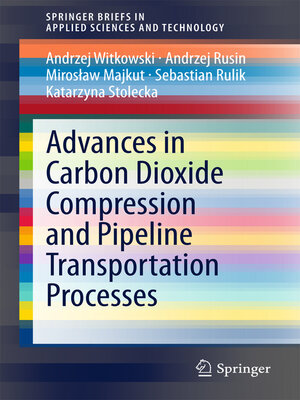Advances in Carbon Dioxide Compression and Pipeline Transportation Processes
ebook ∣ SpringerBriefs in Applied Sciences and Technology
By Andrzej Witkowski

Sign up to save your library
With an OverDrive account, you can save your favorite libraries for at-a-glance information about availability. Find out more about OverDrive accounts.
Find this title in Libby, the library reading app by OverDrive.



Search for a digital library with this title
Title found at these libraries:
| Loading... |
Providing a comprehensive analysis of CO2 compression, transportation processes and safety issues for post combustion CO2 capture applications for a 900 MW pulverized hard coal-fired power plant, this book assesses techniques for boosting the pressure of CO2 to pipeline pressure values with a minimal amount of energy. Four different types of compressors are examined in detail: a conventional multistage centrifugal compressor, integrally geared centrifugal compressor, supersonic shock wave compressor, and pump machines. The study demonstrates that the total compression power is closely related to the thermodynamic process and is not determined by compressor efficiency alone. Another problem addressed is that of CO2 pipeline transport from the compressor outlet site to a disposal site under heat transfer conditions. The book also features an analysis of simulations and models that are used to determine the maximum safe pipeline distance to subsequent booster stations as a function of inlet pressure, ambient temperature, thickness of the thermal insulation and ground-level heat flux conditions. This book focuses on compression as well as transportation processes with particular emphasis on the safety risks related to the transport of CO2. The most important problem in terms of environmental protection is ensuring precise and reliable hazard identification. As hazards can only be managed effectively if they are properly identified, problems involving the discharge and atmospheric dispersion of CO2 are also discussed.






